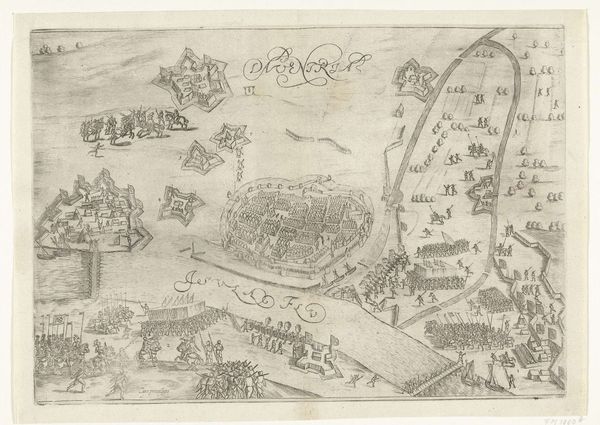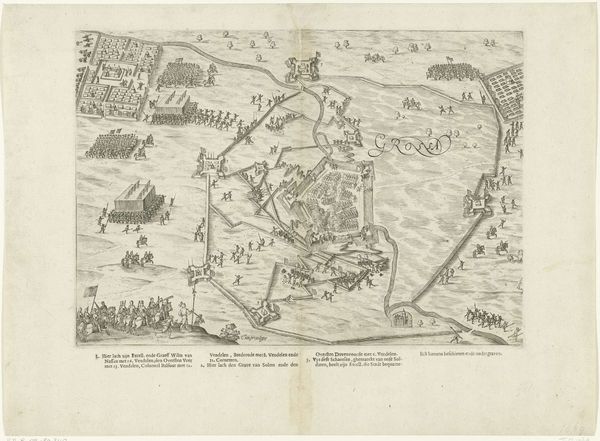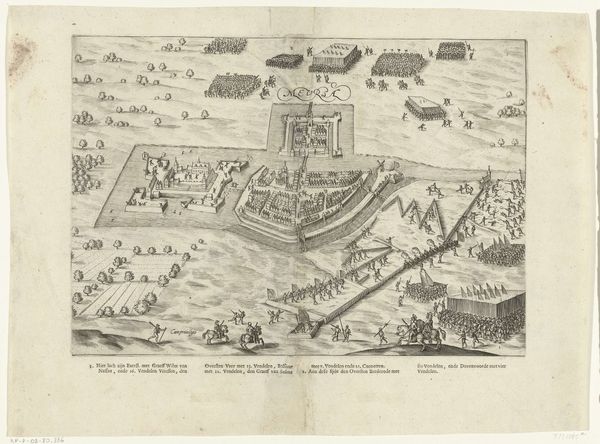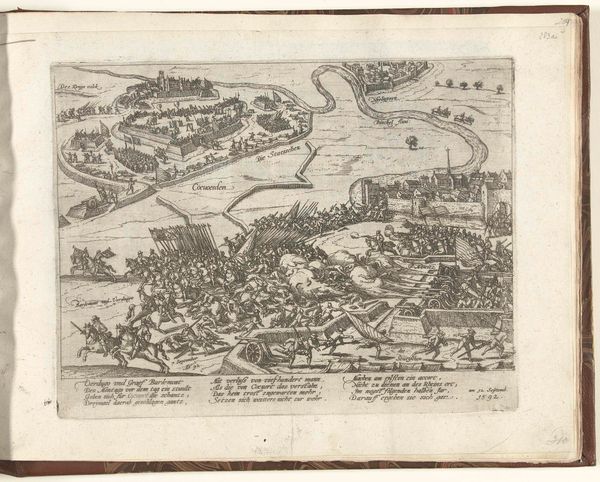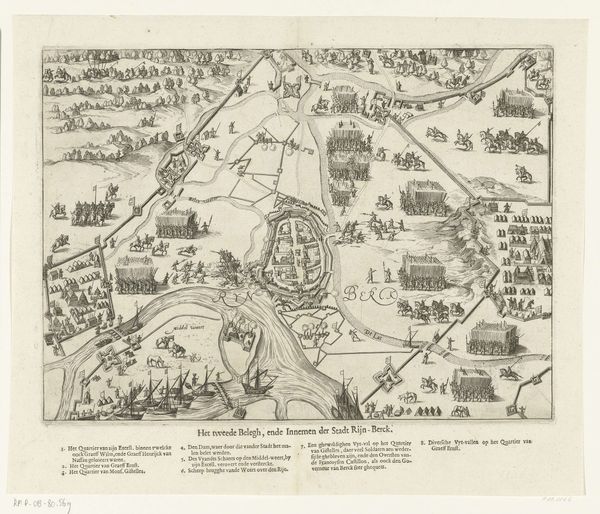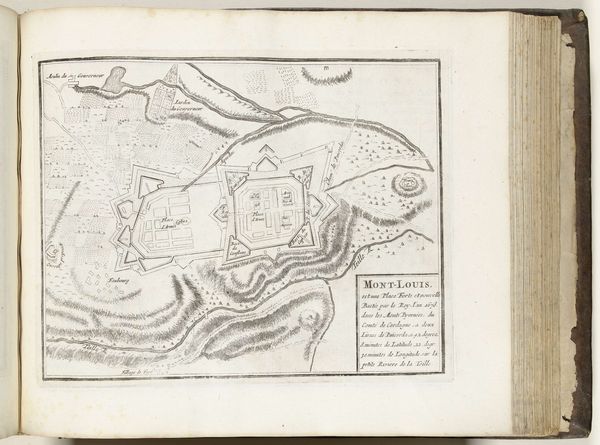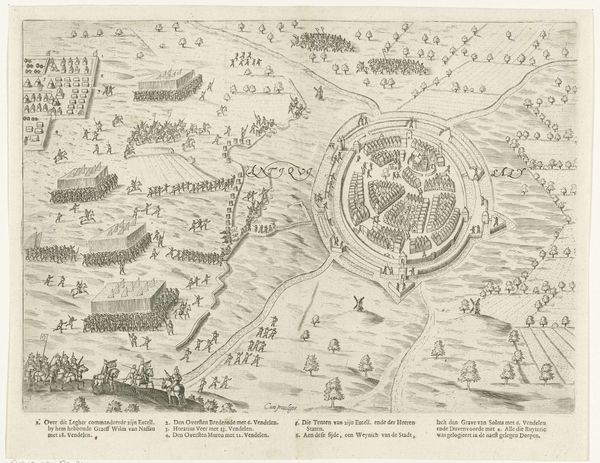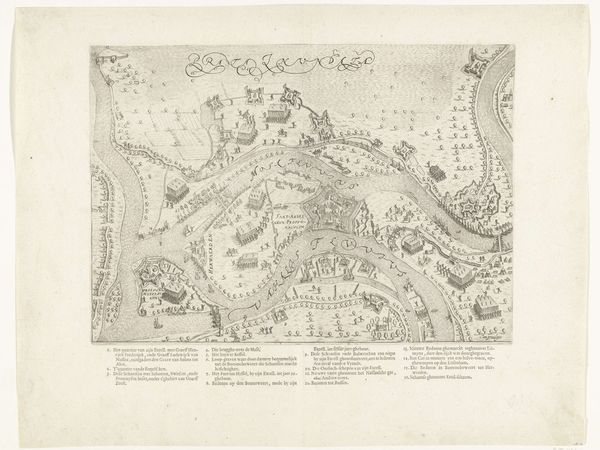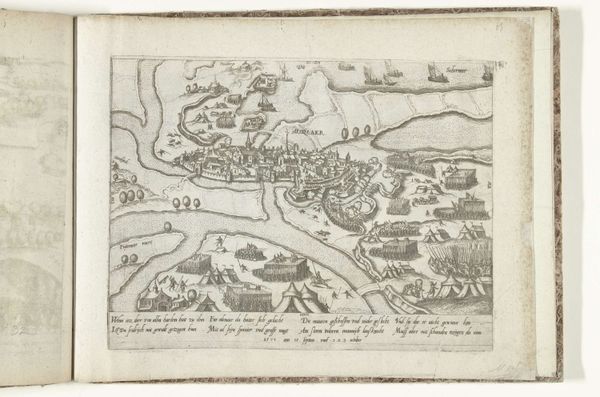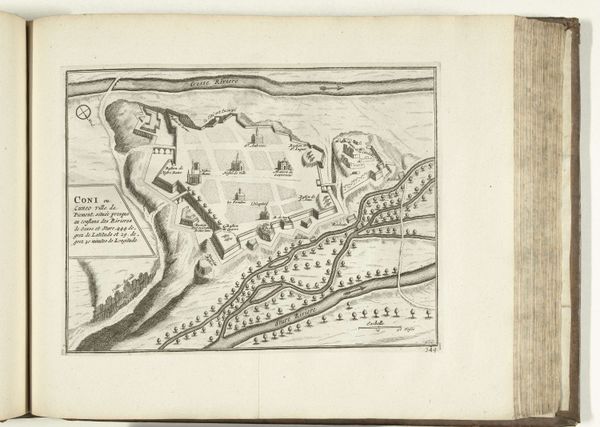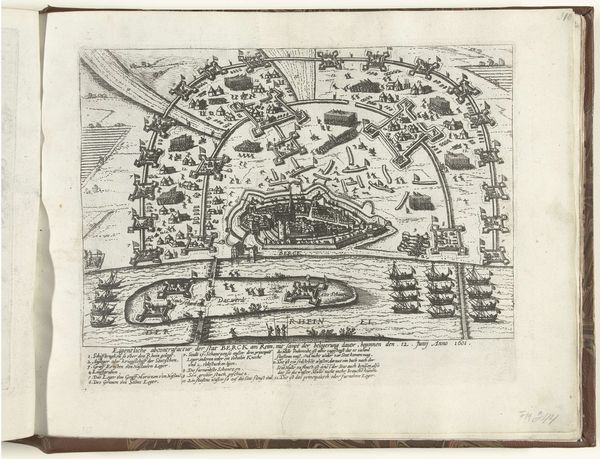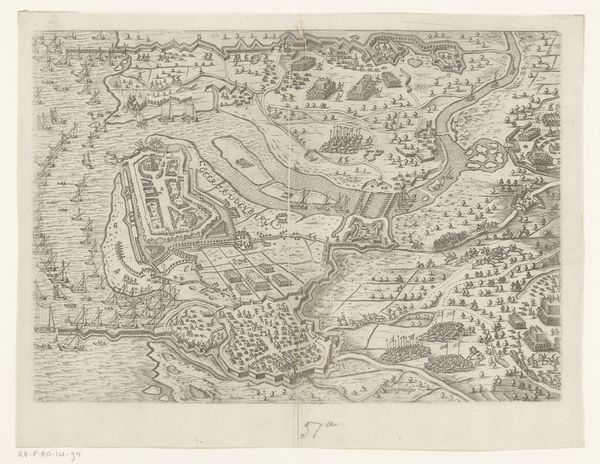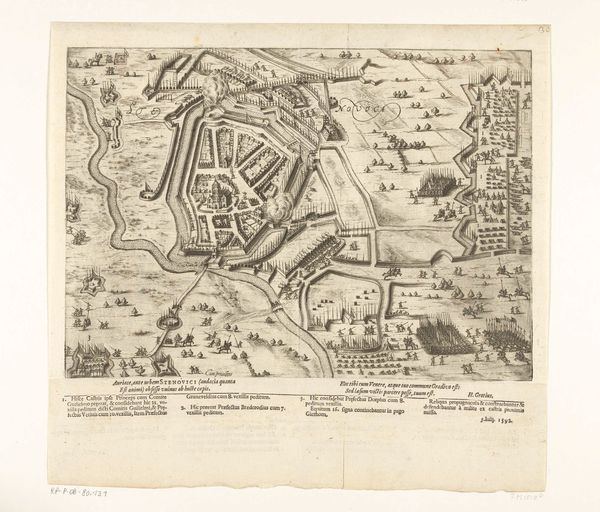
print, engraving
#
baroque
# print
#
cityscape
#
history-painting
#
engraving
Dimensions: height 316 mm, width 406 mm
Copyright: Rijks Museum: Open Domain
Curator: Welcome to the Rijksmuseum. We’re standing before Pieter Bast’s engraving, "Beleg en inname van Deventer, 1591," created sometime between 1600 and 1610. Editor: The scene sprawls with fascinating detail, yet the overall effect feels quite ordered, even serene. It’s hard to believe it depicts a siege! The linear precision creates an intriguing sense of distance, emotionally. Curator: Indeed. Bast employs a high vantage point, allowing him to meticulously map the siege as a set of structured actions, the various troop formations, fortifications and lines creating a formal geometric design. It’s all about objective rendering. Editor: And yet, that objective rendering still communicates power, I think. The bird's-eye view was often favored during periods of conflict, evoking a sense of control and domination for the viewer. The star forts, for instance—their geometric forms are not merely practical defenses but also symbols of military might and Renaissance order imposed upon the landscape. Curator: Precisely! The composition uses the river as a dividing structural element that works to further break the action into manageable spaces. Editor: The image feels deeply embedded in the cultural memory of the Netherlands. Sieges and cityscapes of this type acted as visual testaments of Dutch resilience and burgeoning power during the early modern period, recalling pivotal moments of the Eighty Years' War, for example, functioning almost as political advertisements for the Dutch Republic. Curator: It is compelling how he used a rather rigid formal style to depict a battle scene. His use of line is masterful; note how line quality itself varies, subtly differentiating zones within the picture plane. Editor: These sieges were turning points—they solidified a narrative of national identity, representing not just military victories but also cultural survival. Even the decision to render this event as a print allows for a wider dissemination of the narrative, engraving historical events into popular memory. Curator: So, from a formal perspective, Bast offers a well-ordered view. It's intriguing that this relatively static depiction of form came to represent dynamic action. Editor: Exactly. In examining "Beleg en inname van Deventer, 1591", we witness how Bast’s image weaves symbols of power and Dutch perseverance to define a formative period. Curator: And also exemplifies how formal qualities could lend an air of dignified, perhaps even propagandistic power, to the event.
Comments
No comments
Be the first to comment and join the conversation on the ultimate creative platform.
